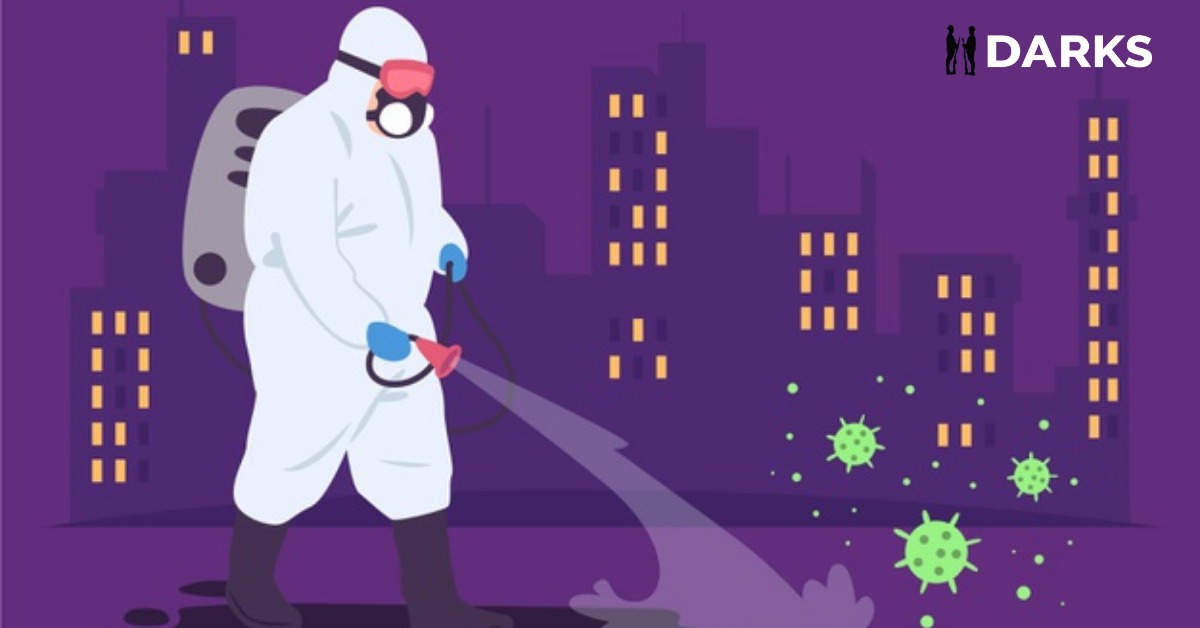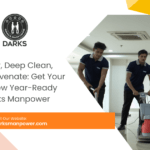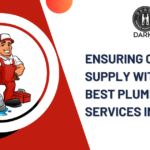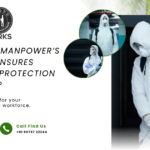The Sars COVID-19 virus has completely taken the entire mankind at ransom by taking it to the level of a global pandemic where people are falling sick and dying due to this virus in different countries of the world. In this situation, it has become extremely important for us to educate ourselves and follow the protocol of maintaining the strictest levels of hygiene by understanding the threat properly and by following the laid down procedures. Darks Security Consultants Pvt Ltd, being the best disinfection service provider in Kolkata and the best sanitizing expert company in Kolkata shares some important information on this subject.
Where are germs found?
Germs are a part of everyday life. Some of them are helpful, but others are harmful and cause disease. They can be found everywhere – in our air, soil, and water. They are on our skin and in our bodies. Germs are also on the surfaces and objects that we touch.
Sometimes those germs can spread to you and make you sick. For example, there could be germs on a television remote. You could get infected with the germs if you touch the remote and then rub your eyes or nose or eat with your hands.
How can you avoid getting germs from surfaces and objects?
To avoid becoming infected by germs from surfaces and objects, it is important to wash your hands often. But you can\’t wash your hands every time you touch something. So it\’s also important to regularly clean and disinfect surfaces and objects.
What is the difference between cleaning, sanitizing, and disinfecting?
Some people think that disinfecting is the same thing as cleaning or sanitizing. But they are actually different:
- Cleaning removes dirt, dust, crumbs, and germs from surfaces or objects. When you clean, you will likely use soap (or detergent) and water to physically clean off the surfaces and objects. This may not necessarily kill the germs. But since you removed some of them, there are fewer germs that could spread infection to you.
- Disinfecting uses chemicals (disinfectants) to kill germs on surfaces and objects. Some common disinfectants are bleach and alcohol solutions. You usually need to leave the disinfectant on the surfaces and objects for a certain period of time to kill the germs. Disinfecting does not necessarily clean dirty surfaces or remove germs.
- Sanitizing could be done either by cleaning, disinfecting, or both. Sanitizing means that you are lowering the number of germs to a safe level. What is considered a safe level depends on public health standards or requirements at a workplace, school, etc. For example, there are sanitizing procedures for restaurants and other facilities that prepare food. What you do to sanitize will vary, depending on your needs. You might be mopping a floor using a mop, a chemical, and water. You might use a dishwasher to sanitize the dishes. Or you could be using an antibacterial wipe on a tv remote.
If you both clean and disinfect a surface or object, you can further lower the risk of spreading infection. There are products that clean and disinfect at the same time.
Which surfaces and objects do you need to clean and disinfect?
To prevent the spread of infection, you should regularly clean and disinfect surfaces and objects that are touched often. For example, in your house, this would include countertops, doorknobs, faucet and toilet handles, light switches, remotes, and toys.
Professional organizations like Darks are the best bet in managing these issues on a regular basis following all protocols as laid down by the health authorities. Darks Security Consultants provide the best sanitization work in Kolkata and also the best disinfection Services in Kolkata.
How can you safely clean and disinfect?
It\’s important to be safe when using cleaning and disinfecting products:
- Store them in the containers they came in. Always follow the instructions and pay attention to the warnings on the label.
- Do not mix cleaners and disinfectants unless the labels say that it is safe to do so. Combining certain products (such as chlorine bleach and ammonia cleaners) can cause serious injury or even death.
- Check the label to see whether you need to use gloves to protect your hands and/or eye protection when using the products.
- If you swallow, inhale, or get them on your skin, follow the directions on the label or get medical help.
- Store them out of the reach of children.






